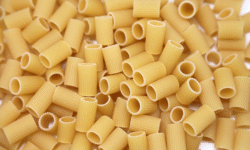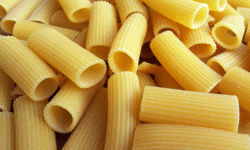Water
Consumption area(s): Earth
Chemical formula: H₂O (commercially not available in pure form, always mixed with other elements in varying percentages)
Chemical/Physical properties:
Density: 0.99984 g/cm³
Boiling point: 100°C
Melting point: 0°C

Introduction
Water is a chemical compound made up of two hydrogen atoms bonded to one oxygen atom. Under standard temperature and pressure conditions, it appears as a colorless liquid, though it can shift to vapor or ice depending on temperature changes. Water is an exceptional solvent, capable of dissolving a wide range of substances—an essential quality that makes it crucial both in its pure form and as a solution containing various dissolved solutes.
Water is a chemical compound made up of two hydrogen atoms bonded to one oxygen atom. Under standard temperature and pressure conditions (normal environmental conditions around 25°C and 1 atmosphere), it appears as a colorless liquid, though it can shift to vapor or ice depending on temperature changes. Water is an exceptional solvent (a liquid that can dissolve many substances), capable of dissolving a wide range of substances—an essential quality that makes it crucial both in its pure form and as a solution (a uniform mixture of substances) containing various dissolved solutes (the materials that are dissolved in a liquid).
Natural water sources often contain essential minerals our bodies need, such as calcium, magnesium, sodium, chloride, potassium, fluoride, manganese, and phosphorus. These minerals, present as salts and ions, play a vital role in many metabolic processes.
Drinking water is water that is safe to consume, whether ingested directly as a liquid or indirectly through food preparation. It is commonly (though not always) delivered via taps, in which case it’s referred to as tap water. The amount of drinking water required to maintain good health varies based on factors such as physical activity, age, medical conditions, and environmental conditions. In hot climates, for example, individuals engaged in physical labor may need as much as 16 liters per day.
History of drinking water
During the Neolithic period, humans began to dig the first permanent wells, such as those discovered in Cyprus around 8500 BCE and in the Jezreel Valley around 6500 BCE. The availability of water played a crucial role in determining the size and location of human settlements, which relied heavily on access to drinking water sources.
By 3000 BCE, the dwellings of Skara Brae and the Barnhouse Settlement in the Orkney Islands featured a primitive internal system for both freshwater and wastewater, consisting of stone-lined channels covered with tree bark. This system may have been used to transport and distribute drinking water. Ancient civilizations, such as those in Mesopotamia and the Indus Valley, used domestic wastewater for irrigation and fertilization.
Over the centuries, the use of drinking water became more sophisticated with the development of aqueducts and advanced hydraulic systems. The Minoan and Greek civilizations built underground conduits to transport clean water into their cities. The Minoan capital, Knossos, had a well-organized water system that ensured a steady supply of fresh water, while the Romans developed aqueducts that delivered drinking water to cities like Rome and Athens.
During the Middle Ages, European cities continued to use water supply systems, though generally with less advanced technologies compared to those of the Romans. In London, for example, the first water treatment facilities were developed, helping improve water quality during the cholera outbreaks of the 19th century.
Today, access to safe drinking water remains a global public health issue, marked by significant inequalities between developed and developing countries. In developed nations, tap water generally meets quality standards, though only a small portion is actually consumed as drinking water. In contrast, in many developing regions, families spend a substantial share of their income on water.
Water production method
Drinking water is available in most populated areas of the world, although it can be costly and is not always guaranteed. The main sources of drinking water include springs, groundwater such as aquifers, rainwater, rivers, and glaciers, as well as seawater processed through desalination.
To be safe for consumption, this water must be properly treated to meet quality standards and ensure its safe use. In addition, there are innovative solutions such as atmospheric water generators, which extract moisture from the air. Springs are often used as sources of bottled water, valued for their natural purity.
Classification of water
Besides the still water described here, water can also be found as:
- Ice
- Sparkling water
- Distilled water
Nutritional facts table
| Nutrients | Per 100 g |
| Calories (kcal) | 0 |
| Total fat (g) | 0 |
| ———Saturated fat (g) | 0 |
| Cholesterol (mg) | 0 |
| Sodium (mg) | 0 |
| Total carbohydrates (g) | 0 |
| ———Dietary fiber (g) | 0 |
| ———Total sugar (g) | 0 |
| Protein (g) | 0 |
Recipes that use this product as an ingredient:
Source(s):
https://en.wikipedia.org/wiki/Water
https://it.wikipedia.org/wiki/Acqua
https://it.wikipedia.org/wiki/Acqua_potabile
https://en.wikipedia.org/wiki/Drinking_water
https://en.wikipedia.org/wiki/History_of_water_supply_and_sanitation
Photo(s):
1. José Manuel Suárez, CC BY 2.0 https://creativecommons.org/licenses/by/2.0, via Wikimedia Commons





